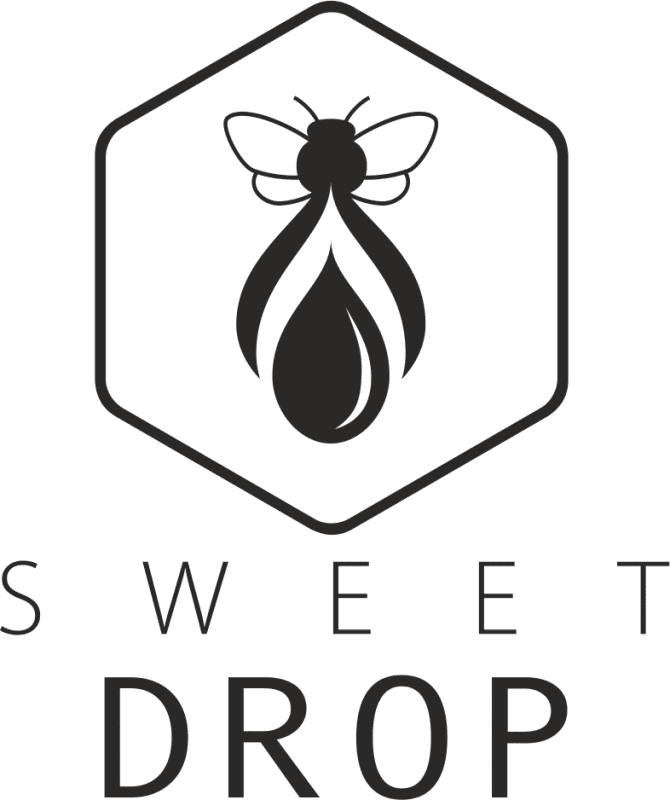Propolis or bee glue is a resinous mixture that honey bees produce by mixing saliva and beeswax with exudate gathered from tree buds, sap flows, or other botanical sources. It is used as a sealant for unwanted open spaces in the hive. Propolis is used for small gaps (approximately 6 millimeters or less), while larger spaces are usually filled with beeswax. Its color varies depending on its botanical source, with dark brown as the most common. Propolis is sticky at and above 20°C, while at lower temperatures it becomes hard and brittle.
When foraging, worker bees primarily harvest pollen and nectar, while also collecting water and plant resin necessary for the production of propolis. The chemical composition and nature of propolis depend on environmental conditions and harvested resources.
Purpose
For centuries, beekeepers assumed that bees sealed the beehive with propolis to protect the colony from the elements, such as rain and cold winter drafts. However, 20th-century research revealed that bees not only survive, but also thrive, with increased ventilation during the winter months throughout most temperate regions of the world.[citation needed]
Propolis functions may include:
Reinforce the structural stability and reduce vibration
Provide improved thermal insulation to the hive and reduce water loss
Provides protection from pathogens, via anti-fungal and antibacterial properties.
Make the hive more defensible against parasites and predators by narrowing the existing entrance (in wild colonies) to a single “choke point”
Mitigate putrefaction within the hive. Bees usually carry waste out of and away from the hive. However, if a small lizard or mouse, for example, finds its way into the hive and dies there, bees may be unable to carry it out through the hive entrance. In that case, they would attempt instead to seal the carcass in propolis, essentially mummifying it and making it odorless and harmless.
Propolis in hive
The composition of propolis varies from hive to hive, from district to district, and from season to season. Normally, it is dark brown in color, but it can be found in green, red, black, and white hues, depending on the sources of resin found in the particular hive area. Honey bees are opportunists, gathering what they need from available sources, and detailed analyses show that the chemical composition of propolis varies considerably from region to region, along with the vegetation. In northern temperate climates, for example, bees collect resins from trees, such as poplars and conifers (the biological role of resin in trees is to seal wounds and defend against bacteria, fungi, and insects). “Typical” northern temperate propolis has approximately 50 constituents, primarily resins and vegetable balsams (50%), waxes (30%), essential oils (10%), and pollen (5%). Propolis also contains persistent lipophilic acaricides, a natural pesticide that deters mite infestations.
In neotropical regions, in addition to a large variety of trees, bees may also gather resin from flowers in the genera Clusia and Dalechampia, which are the only known plant genera that produce floral resins to attract pollinators. Clusia resin contains polyprenylated benzophenones. In some areas of Chile and Argentina Andean valleys, propolis contains viscidone, a terpene from Baccharis shrubs, and in Brazil and Paraguay, naphthoquinone epoxide has recently been isolated from red propolis, and prenylated acids such as 4-hydroxy-3,5-diprenyl cinnamic acid have been documented. An analysis of propolis from Henan, China found sinapinic acid, isoferulic acid, caffeic acid, and chrysin, with the first three compounds demonstrating antibacterial properties. Also, Brazilian red propolis, largely derived from Dalbergia ecastaphyllum plant resin, has high relative percentages of the isoflavonoids 3-hydroxy-8,9-dimethoxypterocarpan and medicarpin. Other flavonoids commonly present include galangin and pinocembrin. Caffeic acid phenethyl ester (CAPE) is also a component of some varieties of propolis from New Zealand.
Occasionally, worker bees will even gather various caulking compounds of human manufacture, when the usual sources are more difficult to obtain. The properties of the propolis depend on the exact sources used by each individual hive; therefore any potential medicinal properties that may be present in one hive’s propolis may be absent from another’s, or from another sample in the same hive.
Traditional medicine
Propolis has been used in traditional medicine, with insufficient evidence to rate its effectiveness in the treatment of any illnesses.



